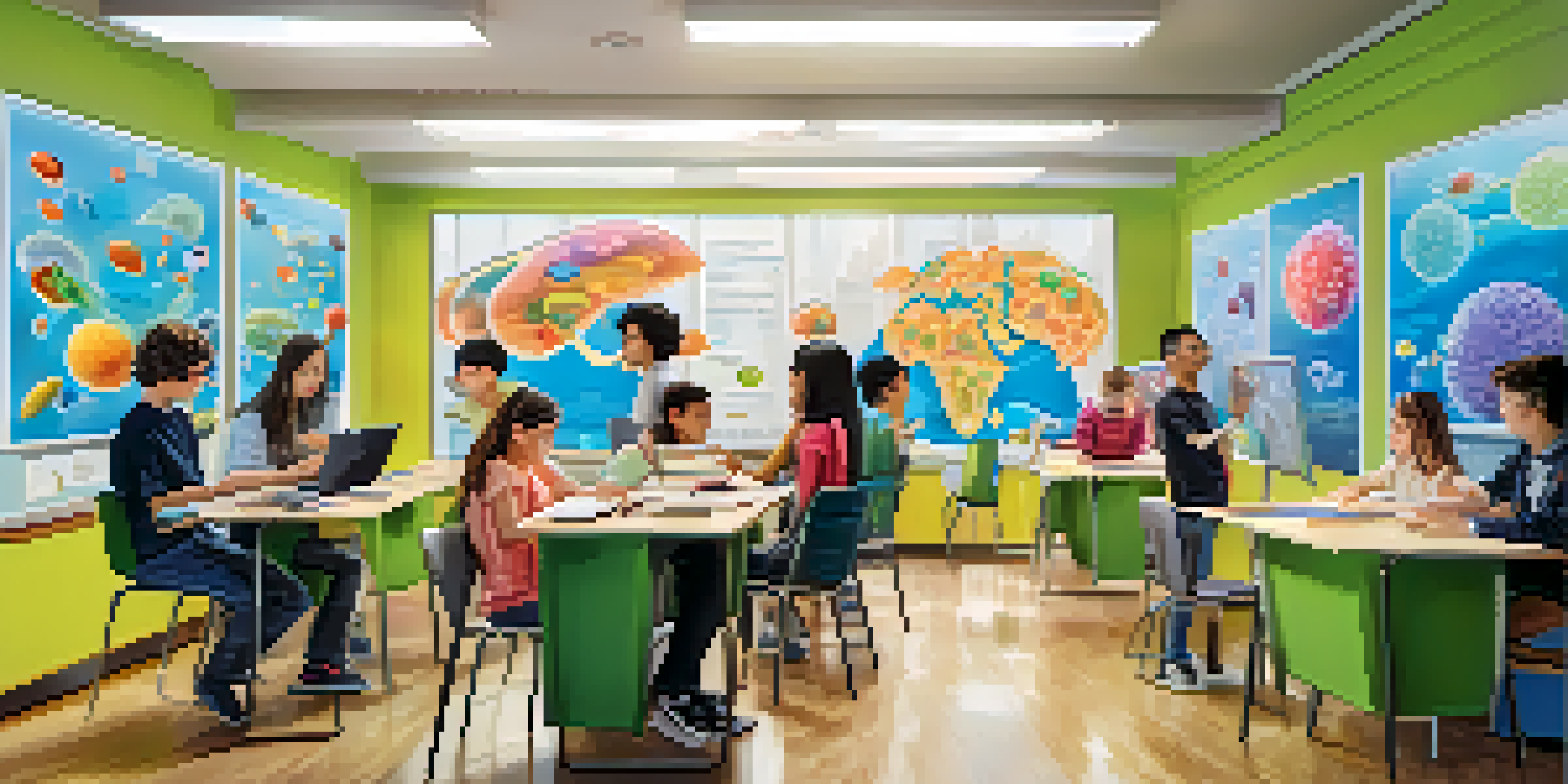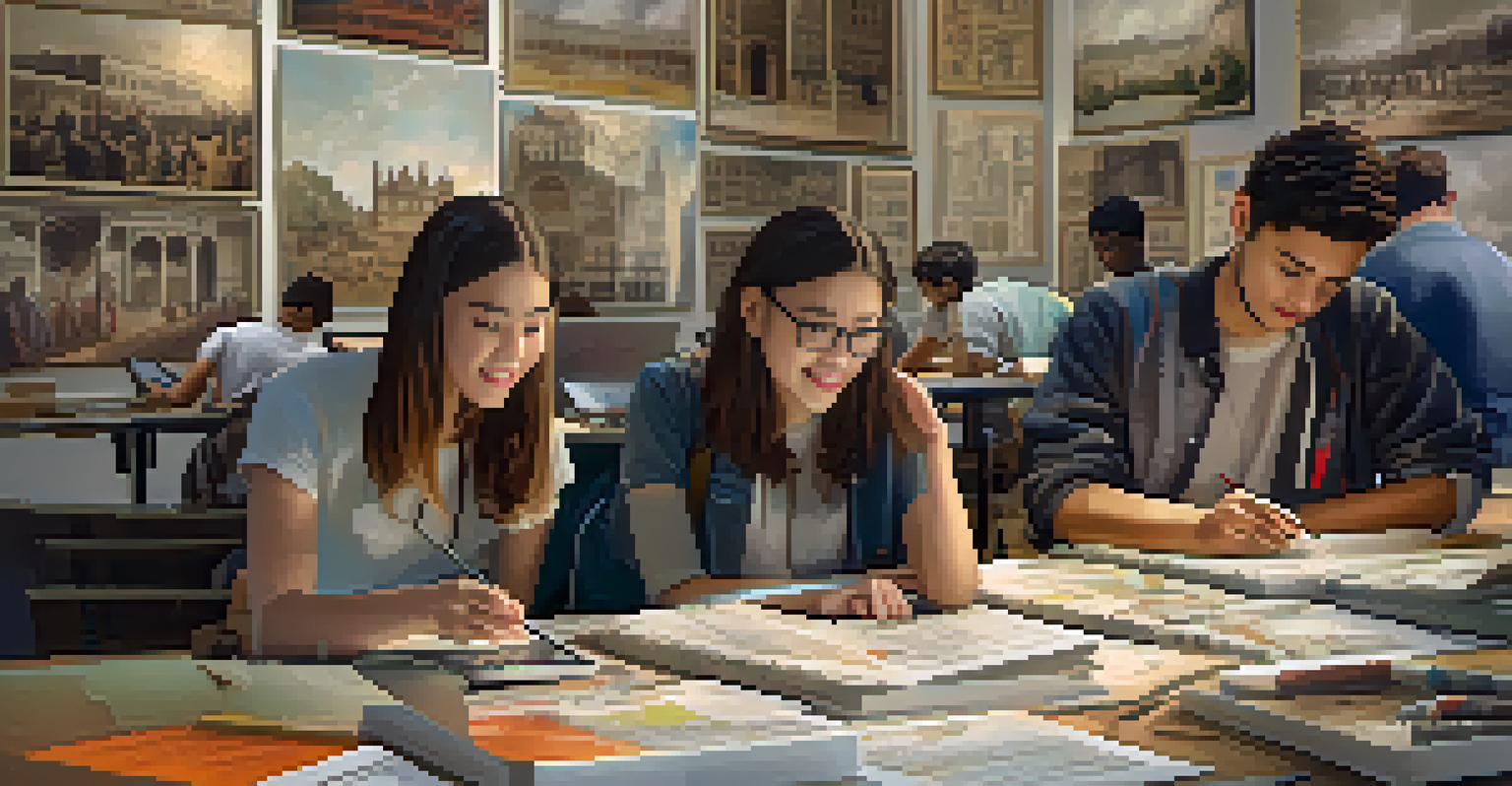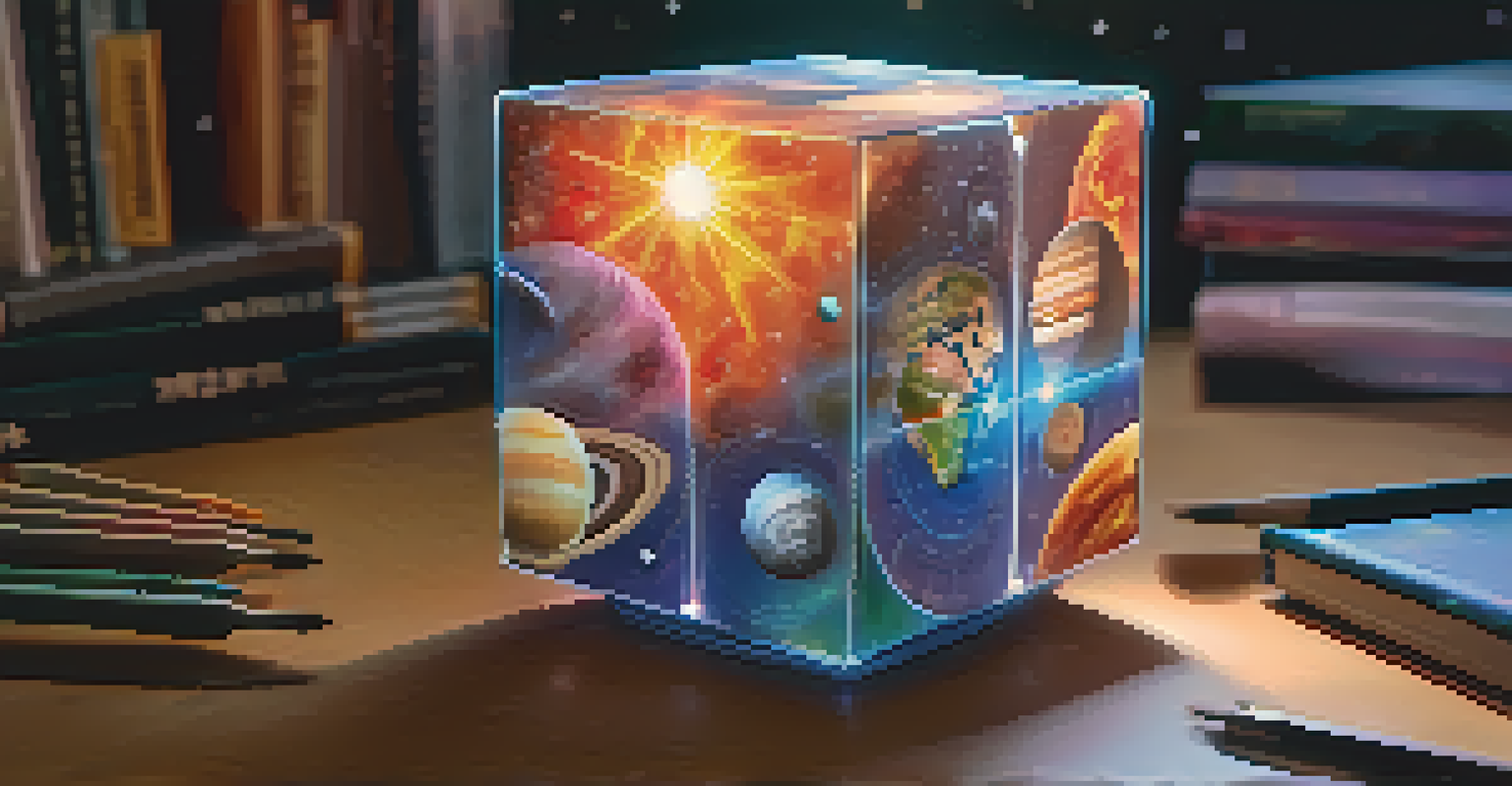Creating AR Content: Empowering Students as Creators

Understanding Augmented Reality in Education
Augmented Reality (AR) is a technology that superimposes digital information onto the real world. In education, this means students can interact with virtual elements as if they were part of their physical environment. Imagine a biology lesson where students can visualize a 3D model of a cell right on their desks, enhancing their understanding and engagement.
Education is not the filling of a pail, but the lighting of a fire.
This interactive experience not only makes learning more fun but also deepens comprehension. It allows students to visualize complex concepts, making them easier to grasp. By incorporating AR tools into classrooms, educators can create a dynamic learning atmosphere that captivates students’ imaginations.
As students engage with AR, they also develop critical thinking and problem-solving skills. They learn to navigate digital landscapes while connecting the dots between virtual information and real-world applications. This skill set is vital in today’s technology-driven world, preparing students for future challenges.
The Role of Students in Content Creation
Empowering students as content creators is a game-changer in education. When students have the opportunity to create AR content, they transition from passive learners to active participants in their educational journey. This hands-on approach fosters creativity and innovation, allowing students to express their unique ideas and perspectives.

For instance, a group of students could design an AR experience that showcases their local history. By researching and collaborating, they not only learn about their community but also gain valuable skills in teamwork and project management. This kind of project can ignite a passion for learning that extends beyond the classroom.
AR Enhances Learning Engagement
Augmented Reality transforms education by allowing students to interact with digital elements, making complex concepts easier to understand.
Additionally, creating AR content helps students to develop technical skills that are increasingly relevant in various fields. They learn how to use software and tools that can serve them in future careers, making education not just about textbooks, but about real-world applications.
Tools for Creating AR Content in the Classroom
There are several tools available that make it easy for students to create AR content. Platforms like CoSpaces, ZapWorks, and Merge Cube allow students to build their own AR experiences without needing extensive coding skills. These user-friendly interfaces empower students to unleash their creativity while learning essential digital skills.
The future belongs to those who believe in the beauty of their dreams.
For example, CoSpaces enables students to create interactive 3D environments that can be viewed through smartphones or tablets. This accessibility means that students can work on projects individually or collaboratively, in or out of the classroom. Such flexibility enhances engagement and allows for a broader range of creative expression.
Moreover, many of these tools come with tutorials and resources, making it easier for educators to guide their students. By integrating these tools into lesson plans, teachers can inspire students to explore new ways of learning and create impactful content that reflects their understanding of the subject matter.
Fostering Collaboration Through AR Projects
Collaboration is at the heart of successful AR projects. When students work together to create AR experiences, they learn to communicate effectively and share ideas. This collaborative spirit encourages them to listen to each other and build on one another’s strengths, which is essential in both academic and professional settings.
For instance, a project could involve students from different grades or subjects coming together to create a comprehensive AR presentation on climate change. Each group could focus on a different aspect, such as impacts, solutions, or scientific principles. This not only enriches the project but also fosters a sense of community and shared purpose.
Students as Content Creators
Empowering students to create AR content fosters creativity and innovation while equipping them with valuable technical skills for future careers.
Furthermore, collaborating on AR projects builds essential social skills. Students learn to negotiate, compromise, and support one another, preparing them for future group endeavors in college and beyond. This teamwork experience is invaluable as they navigate their educational paths and future careers.
Engaging Diverse Learning Styles with AR
AR technology is a powerful tool for engaging diverse learning styles. Not all students learn the same way, and AR can cater to visual, auditory, and kinesthetic learners alike. For example, visual learners benefit from the 3D representations, while auditory learners can engage with accompanying soundscapes and narratives.
Kinesthetic learners, who thrive on hands-on experiences, can physically interact with AR elements, making learning more tangible. This multifaceted approach ensures that all students have the opportunity to connect with the material in a way that resonates with them. By addressing different learning preferences, educators can create a more inclusive environment.
Incorporating AR into lessons also encourages students to take ownership of their learning. When they can choose how they engage with content, they are more likely to be motivated and invested in their education. This sense of agency empowers students to explore subjects that intrigue them, fostering a lifelong love of learning.
Overcoming Challenges in AR Content Creation
While the benefits of AR in education are clear, there are challenges to consider. One significant hurdle is the accessibility of technology. Not all students may have access to devices capable of running AR applications, which can create disparities in learning experiences. Educators must find ways to bridge this gap to ensure all students can participate.
Additionally, teachers may need training to effectively integrate AR into their lessons. Understanding how to use the tools and teach students to create AR content can require time and resources. Schools must support educators through professional development opportunities to ensure they feel confident in utilizing this technology.
Collaboration Boosts Learning
Working together on AR projects enhances communication and social skills, preparing students for collaborative efforts in their academic and professional futures.
Lastly, there’s the challenge of curriculum alignment. Educators should ensure that AR projects align with learning objectives and standards. By thoughtfully integrating AR content creation into existing curricula, teachers can enhance learning without compromising educational goals.
The Future of AR in Education
The potential for AR in education is immense, and its future looks promising. As technology continues to evolve, we can expect even more innovative tools and resources that will make AR content creation more accessible for students. This evolution could lead to breakthroughs in how we teach and learn across various subjects.
Moreover, as schools increasingly adopt AR technology, we can anticipate a shift in pedagogical approaches. Educators may focus more on experiential learning, where students actively participate in their education through creation rather than mere consumption. This shift will empower students to become critical thinkers and innovative problem-solvers.

Ultimately, the future of AR in education is about harnessing creativity and technology to enrich learning experiences. By empowering students as creators, we not only enhance their educational journey but also prepare them for a rapidly changing world where innovation is key.